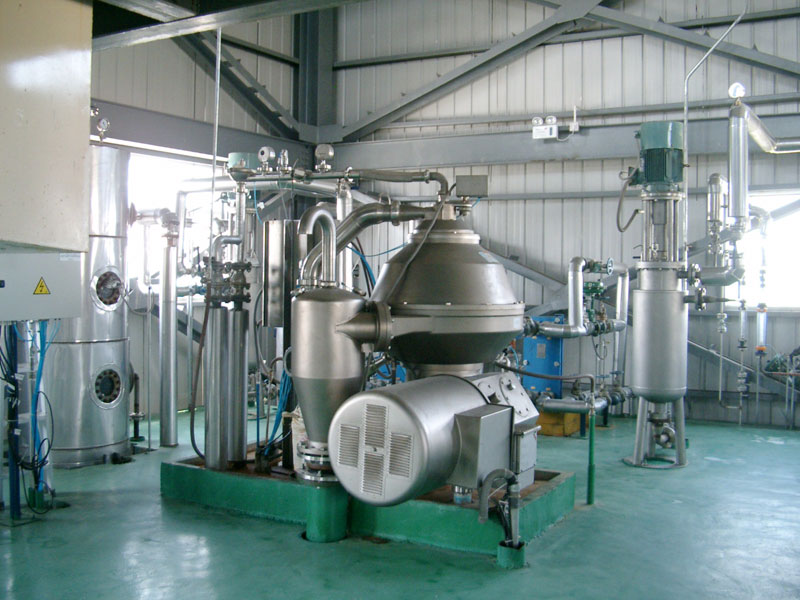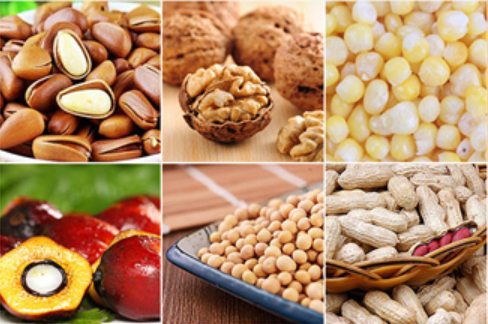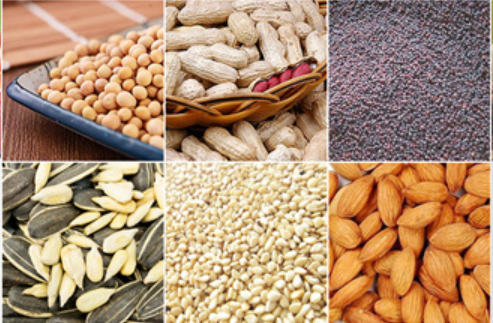With the progress of the times, full continuous refining equipment is used in more and more industries. What is the process flow of full continuous edible oil refining equipment? What are the main equipment of the continuous edible oil refining workshop? What are the main economic and technical indicators of the continuous edible oil refining workshop? What are the characteristics of continuous edible oil refining equipment?

The main features of full continuous refining equipment: high degree of production automation, good quality of finished oil, suitable for processing bulk oils such as soybean oil, rapeseed oil, cottonseed oil, etc., of more than 50 tons per day.
Fully continuous refining equipment can complete hydration, alkali refining, water washing, decolorization, and deodorization process operations, and adopts electronic metering, high-speed centrifuge desoaping, vacuum (continuous) drying and other excellent technologies. It can be used for the refining of rapeseed oil, cottonseed oil, peanut oil, linseed oil and other vegetable oils, as well as animal fats such as lard, tallow, and mutton oil produced by the one-time extraction process. It is also suitable for rice bran oil, sunflower oil, etc.

The main equipment of the full continuous refining workshop: centrifuge, decolorization tower, deodorization tower, blade filter, four-stage steam jet pump, water jet pump.
Process characteristics of full continuous refining equipment: the refining process is mainly the decolorization and deodorization process stages. After the alkali refining is dried by a vacuum dryer, it is heated by a plate heat exchanger and enters the continuous decolorization tower, and the white clay is added for decolorization. The decolorized oil is pumped into the leaf filter for filtration. Then it is sent to the safety filter to filter.
The decolorized oil is pumped into the gas separator to remove air, enters the heat exchanger to exchange heat with the deodorized oil, and then enters the heat-conducting oil heater for heating and then enters the deodorization tower. The deodorized oil is drawn from the bottom and pumped into the heat exchanger to exchange heat with the oil to be deodorized, and the refined oil is obtained after cooling.

Brief introduction of main process of full continuous refining equipment:
1. Water elution gel and deacidification section:
Neutralization: The crude oil is output from the crude oil tank by the oil supply pump, and after being measured, it enters the crude oil heat exchanger to recover part of the heat, and then is heated to the required temperature by the heater, and is combined with the metered phosphoric acid or citric acid from the phosphoric acid tank. The mixed gas (M401) is mixed into the conditioning tank (R401) to convert the non-hydratable phospholipids in the oil into hydrated phospholipids; then add alkali for neutralization, and the amount of alkali and the concentration of the lye depends on the crude oil quality. The neutralized oil is heated to the separation temperature (90°C) by a heater and enters a centrifugal separator for separation to remove phospholipids, FFA and other impurities in the crude oil. The oil enters the water washing process.
Washing: The neutralized oil from the neutralization separator still contains about 500ppm of soap. In order to remove these remaining soaps, add about 5-8% hot water to the oil. The temperature of the hot water is usually higher than that of the oil 3- 5°C. In order to make the washing effect more stable, add phosphoric acid or citric acid during washing, and the oil and flood mixer are remixed and heated to 90-95℃ by the heater to enter the washing separator to separate the residual soap and most of the water, which contains soap, The oily water enters the oil-water separation tank. After the oil is captured, it is further captured by the outdoor oil catching tank, and the waste water is discharged to the sewage treatment station.
Vacuum drying stage: The washing oil from the washing separator still contains a small amount of water that is not conducive to the stability of the oil. In order to remove the water, the oil at 90°C is sent to the vacuum dryer for vacuum dehydration. The dehydrated oil enters the decolorization process. Canned motor pump is selected as the dry oil extraction pump.
2. Continuous decolorization process:
The main function of the decolorization process is to remove the pigment, the remaining trace soap particles and metal ions in the oil. In the negative pressure state, the combination of mechanical stirring and steam agitation can make the decolorization effect more obvious.
The degummed oil is heated to an appropriate temperature (110°C) into the heater and then enters the clay mixing tank. The white soil is transported from the low-level white soil box to the white soil temporary storage tank by wind, and the white soil addition is automatically metered and interlocked with the oil inlet control. After the oil is mixed with the clay, it overflows to the continuous decolorizer. The decolorizer adopts unpowered steam agitation. The decolorized oil enters two alternately used leaf filters for filtration. The filtered oil passes through the safety filter and then enters the decolorized oil storage tank. The decolorized oil storage tank is designed with a nozzle in the vacuum tank to prevent the decolorized oil from contacting air and affect its peroxide value and color reversion.
3. Continuous refining and deodorization process:
Qualified decolorized oil enters the spiral plate heat exchanger to recover most of the heat, then enters the high-pressure steam heater to be heated to the process temperature (240-260°C), and then enters the deodorization tower. The deodorization tower is a combined type with an upper structure packing, which is mainly used to remove free fatty acids and other odor components, and the lower layer is a plate tower, which mainly has the effect of thermal decolorization and removes the peroxide value in the oil to zero. The oil from the deodorization tower absorbs most of the heat through the heat exchanger, and then further exchanges heat with the crude oil, and then is cooled to 80-85℃ by the cooler, added with the required antioxidants and flavors, and then cooled to below 50℃ for storage . The deodorized fatty acids and other volatile substances are trapped with a filler-type trap, and the trapping liquid is free fatty acids at low temperature (60-75°C). When the liquid level of the fatty acid temporary storage tank is high, it is sent to the fatty acid storage tank for storage.
The main economic and technical indicators of the continuous refining workshop:
1. Steam consumption is less than or equal to 120kg/T oil (refined) as low as 95kg. They are:
Alkali refining≤25kg/T oil
Decolorization≤25kg/T oil
Deodorization≤70kg/T oil
Electricity consumption ≤15KWH/T oil (refining) are:
Alkali refining≤9KWH/T oil
Decolorization≤3KWH/T oil
Deodorization≤3KWH/T oil
2. Water consumption: (soft water) 150Kg/T oil (refined)
3. Compressed air 30M3/hour
5. Coal consumption 23 Kg /T oil
6. Phosphoric acid dosage 0-2 Kg /T oil
7. Alkali dosage acid value×1 Kg/T oil
8. White clay consumption 5-20Kg/T oil
9. The oil content of waste clay <28%
10. Circulating cooling water volume about 100M3/h (refining)
11. Refining losses
(1) Degumming loss = Glue content × 1.2
(2) Deacidification loss=acid value×1.2 (chemical refining) Deacidification loss=acid value×0.6 (physical refining)
(3) Decolorization loss = white soil amount × 0.25%
(4) Deodorization loss≤0.5%
For more questions about the continuous refining equipment, please feel free to consult us!
Copyright © Henan Zhongxing Grain And Oil Machinery Co.,Ltd. All Rights Reserved. Powered by MetInfo